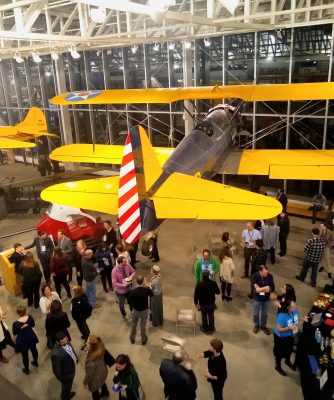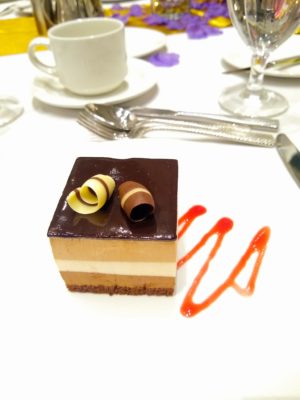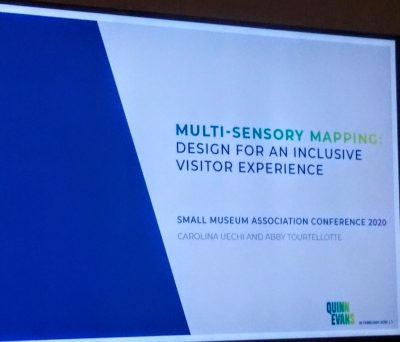Small, but Mighty – SMA Conference 2020

From Visitor Services Coordinator Talia Makowsky. To read more posts from Talia, click here.
Some people spend their birthday celebrating with friends, having a nice dinner, or taking a trip. This year, I celebrated by attending the Small Museum Association Conference 2020, which took place in College Park, Maryland. And it was a wonderful birthday event! I attended lots of informative and interesting sessions and met many lovely people who are dedicated to their missions of learning, preserving, sharing, and making change in the world. Most inspirational to me was the sense of spirit the conference created, of all these folks coming together, and finding tangible techniques and lessons that they can take back to their sites, no matter how many staff, resources, or how much money they have available. All the people at this conference want to make their site or sites more accessible to guests, more inspiring, and find new ways to connect to their wider communities.
This all sounded very familiar to me, as we’re working to do the same thing here at JMM. Hearing others talk through their challenges, and problem-solve together, made me feel like I have chosen the right path professionally. I now have a new network of people to reach out to, when I need help solving my own problems at work. I hope to visit at least a few of the historical and educational sites represented by the other conference attendees, over the course of this year.
In the meantime, I’m still bursting with information and reviewing my notes from the conference. While I share this newfound inspiration with everyone at the Museum, I wanted to take this blog post to share some of the highlights of my time there.
As we shared in a social media post, the College Park Aviation Museum was generous enough to host the SMA Conference reception.

The SMA Board President welcomed us to the conference and to the Aviation Museum, and we had a great time chatting with other and looking around. Though the Aviation Museum is a small museum, they have some amazing historic aircraft, which made for great photo opportunities. If you’re ever in College Park, I highly encourage a visit to the museum, which includes the grounds of the world’s oldest continuously operating airport.
Another highlight of the conference was the Monday night banquet, which I attended as a scholarship winner. Following the theme of the conference, “Honoring the 100th Anniversary of Women’s Suffrage: Museums as Catalysts of Social Change,” people were encouraged to dress in 20’s-style clothing. These outfits ranged from flapper dresses to suffragette costumes, complete with signs declaring women’s right to vote.

The banquet was another opportunity to schmooze with fellow museum professionals, and I learned a lot about sites in New Jersey, New York City, and in Virginia, along with Maryland historical sites and museums. I’m incredibly thankful that I had the opportunity to attend as a scholarship winner, especially since all the winners got to know each other and we often sat near each other as solo attendees. The most amazing part of the banquet though was dessert.

Beyond the events and networking, the most important takeaway for me was the conversations around accessibility. The presenters who focused on this topic made the goal of creating accessible programs, exhibits, and experiences seem more attainable. The presenters provided a range of solutions, large and small, and emphasized why it’s so important to make our sites accessible, beyond the ADA requirements.

Every person who presented about accessibility mentioned that creating accessibility resources with just one group in mind, can help everyone who visits a site. Even if we’re thinking about a person in a wheelchair moving easily through a space, we’re also helping people who don’t like to feel crowded. Providing information through audio media helps those who are blind or have low vision, but also makes a more immersive experience. Having a quiet room to rest during a museum visit isn’t just important for those who can get overwhelmed with sensory experiences. It also helps the average visitor who just wants to sit before they explore the rest of the museum.
I’m most excited to find ways to help the visitors I meet every day to have a more enhanced and immersive experience. I hope that by doing so, they can better learn our stories, explore our history, and imagine a better future.
